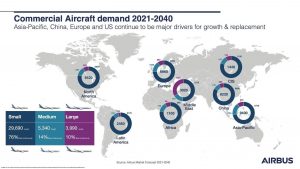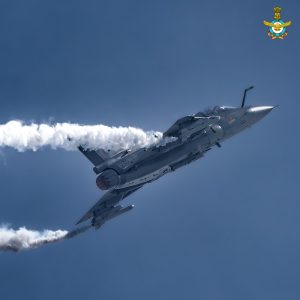
SpiceJet posts profit in Q3 amid turbulent times; to expand 737 MAX fleet
NEW DELHI: Propelled primarily by higher revenues from passenger and cargo segments, SpiceJet on Tuesday reported a consolidated profit of Rs 42.45 crore in the quarter ended December 2021 and is set to expand its aircraft fleet as well as freighter capacity.
SpiceJet, which is currently going through turbulent times amid legal woes, saw its shares surge over 9 per cent after the announcement of the quarterly results as the airline had a consolidated loss of Rs 66.78 crore in 2020 December quarter.
Total income in the latest December quarter climbed to Rs 267.73 crore compared to Rs 187.06 crore in the same period a year ago, according to a regulatory filing.
On a standalone basis, the airline recorded a profit of Rs 23.28 crore in the third quarter of the current fiscal year.
In the year-ago period, it had a loss of Rs 56.96 crore.
Revenues, on a standalone basis, went up 74 per cent to Rs 2,679 crore in the latest quarter under review. In the year-ago period, the same stood at Rs 1,539 crore.
The airline noted that it witnessed strong growth across segments, including a 98 per cent increase in passenger business revenue to Rs 1,681 crore.
The airline’s Boeing 737 MAX returned into operations and the airline termed the settlement with Boeing a significant event during the December quarter.
“As expected, the company received cash and non-cash accommodations significantly in excess of the amounts due to lessors during the period of grounding of MAX aircraft,” it said in a release.
The domestic load factor during the December quarter stood at 85.2 per cent.
SpiceXpress, the airline’s logistics platform, saw its revenue jump 17 per cent on a quarter-on-quarter basis to Rs 584 crore in the three months ended December.
“The airline is now aiming for a stronger comeback in 2022 by utilising and expanding its 737 MAX fleet for better yield and flying experience, launching new customer centric services, optimising daily operations based on IT and expanding network both domestically and internationally,” the release said.
Besides, the carrier is planning to significantly increase freighter capacity in the coming quarters.
SpiceJet Chairman and Managing Director Ajay Singh said he was happy that the airline reported a “profit in Q3 FY2022 driven by excellent logistics operations, rebound in passenger traffic and various accommodations from aircraft manufacturer and lessors”.
According to him, the passenger industry witnessed the much needed turnaround in the third quarter as COVID cases ebbed in the first half of the quarter, travel picked up significantly and there was finally hope that the worst was behind us. However, that changed by the second half of December as Omicron halted that recovery.
“Our performance would have been much better but was impacted by the unexpected delay in the return to service of the 737 MAX, rising fuel costs and certain exceptional adjustments. I am happy to say that there are renewed signs of recovery in the passenger segment and the logistics segment continues to remain strong,” he noted.
On Tuesday, the airline’s scrip soared over 9 per cent to close at Rs 64.5 on NSE while it climbed 8 per cent to settle at Rs 64 on BSE.
The settlement with Boeing not only brought back into operations the grounded MAX aircraft but also paves way for the induction of more efficient and younger MAX aircraft into the fleet. The settlement also ensures the resumption of new aircraft deliveries from our order of 155 MAX aircraft, the release said.
The company had 13 MAX aircraft prior to the worldwide grounding of these planes in March 2019 due to technical reasons.
The aircraft was approved for resumption of operations in August last year.
In an industry first initiative, the airline built Pilot Docs, a digital library to eliminate the need to carry large amount of paper manuals on the aircraft, resulting in operational efficiency, the release said.
Source: Press Trust of India

